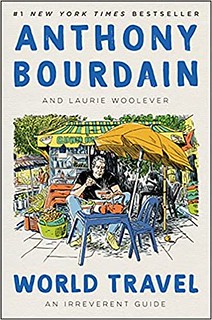by Matthew Barrett
Entertainer’s & Autobiographies
Autobiographies are perhaps one of the more familiar formats in writing. They are simply an author telling you about their life. As normal people we do this pretty regularly when we tell each other about our weekends or what happened on our commute to work. What I find to be the truly interesting autobiographies are the ones written by entertainers, those people who create things that are designed to capture our attention.
This might seem to be a bit of a risk in the autobiographical space, given that there is some assumption that events recounted biographies should be absolutely true and accurate as if recounted by an expert historian. That being said, I think there is something for allowing authors (and especially entertainers) some artistic freedom with the truth. It is their lives they are recounting, after all, we ought to let them recount it the way they want to. As with so many other forms of media, we can employ that magical suspension of disbelief (though less of it than when reading a novel of course!) to be swept up in the story and entertained by what is probably mostly a true story.
BCIT happens to have a few autobiographies by entertainers in our popular reading collection. Why not take a moment to let these individuals pull you into their stories and let the fact that they may be an unreliable narrator be a perk, instead of a detriment.

Me, Elton John, 2019
In Me, Elton John tells his story starting from his childhood in London, but covers a dramatic and full life. John manages to include his confusion about his sexuality, his drug addiction, suicide attempts, the Elton John AIDS Foundation, love, his children, and a wide list of friends he encountered along his journey. It all gets packed into just under 350 pages of hilarity and sadness, and is made all the better by being told by one of the most successful entertainers of all time.

The Storyteller: Tales of Life and Music, Dave Grohl, 2021
In The Storyteller: Tales of Life and Music, Dave Grohl, drummer of grunge band Nirvana, and initially the only member of rock band Foo Fighters, tells an extraordinary story through entirely ordinary moments. For a book written by one of the world’s most amazing musical creators, this is an amazingly down to earth account of events that have stuck in his memory. Of course, it is also full of his love of music, as well as the friends and family he has collected along the way.

No Time Like the Future: an Optimist Considers Mortality, Michael J Fox, 2022
In No Time Like the Future: an Optimist Considers Mortality, Michael J. Fox, shows there is much more to him than simply being Marty McFly. The third of his memoirs puts Fox’s optimism, and thoughts about abandoning it, on full display. He recounts new challenges he has faced, in stories and anecdotes from his life in that will draw in even those who had no particular interest in the actor. Fox still manages to entertain, while presenting a moving look at the inevitability of mortality and the passage of time.


While not autobiographies, BCIT also has access to quite a few films through Criterion under the “Biography” heading. The film Rocketman, which is based on Elton John’s life, would pair nicely with Me, and following up by watching Bohemian Rhapsody, a dramatization of Freddie Mercury’s life, might scratch a similar itch if you are looking for more.





























